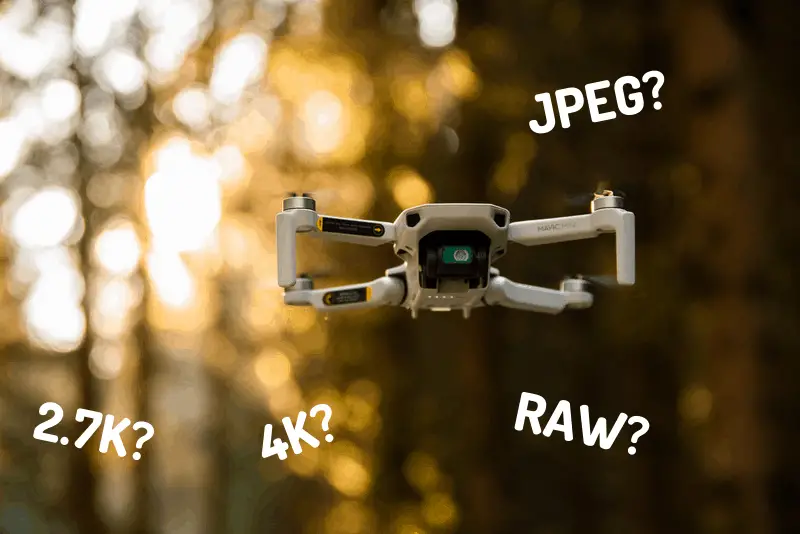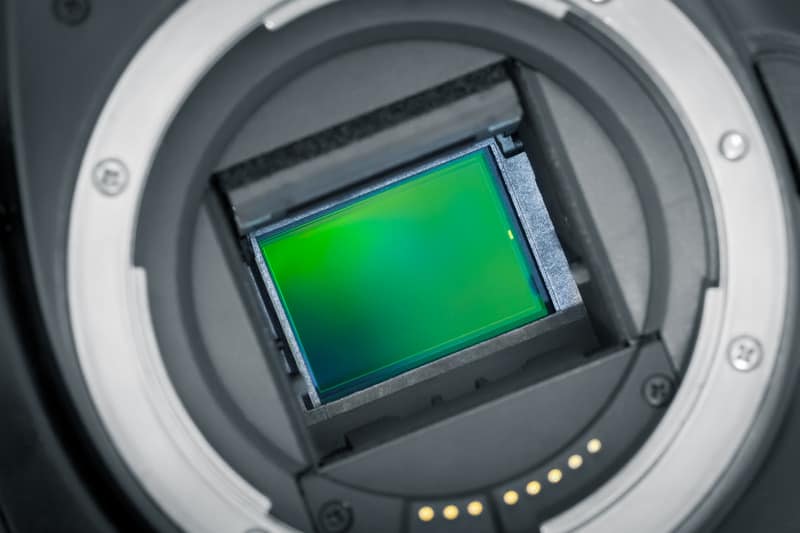Sometimes, things just look better from a distance. A good drone can tell you that. A mini-drone, in particular, can be the perfect companion: easy to use, light, and portable.
It’s not a coincidence that the Mavic Mini is all of these things and more. Yet, there’s an important question to think about. Can the Mavic Mini shoot RAW? The Mavic Mini can shoot 12MP JPGs and 30 fps 2.7k video but it can not shoot RAW or 4k.

For some, this is a dealbreaker. The ability to shoot RAW is incredibly important for some dedicated photographers out there. However, that doesn’t mean you can’t take amazing photos with the Mini. For beginners, this is an ideal entry-level drone.
Read on for more details into RAW photography.
How Does RAW Photography Work?
When you take a picture with your phone, this picture is directed to your gallery. It’s saved in a particular format: usually either JPEG or RAW.
A camera raw image file contains minimally processed data. This data is from either a digital camera, movie film scanner, or any other image scanner image sensor. RAW files are named so because they aren’t yet processed. Therefore, they’re not ready for printing or editing with a bitmap graphics editor. The magic happens in post-production, where they’re edited and readied for printing and sharing.
You may be a little familiar with the JPEG format. It’s used so commonly since you can view a JPEG image without having to edit anything. However, you may not be familiar with other details. One of these details is the fact that JPEG images are compressed, which makes them smaller in size. While this makes them easier to store, JPEG images suffer a varying loss in quality.
To photo editors, this loss in quality isn’t a small detail. Since much of the image data is lost, there isn’t much that could be salvaged in the editing process. So if you need to tweak the saturation or contrast a bit, you’re in hard luck.
This is where RAW files come in. To put it simply, RAW files are uncompressed. Sure, that means they’re bigger in size, but they also retain their image data. In turn, you’re allowed a greater amount of freedom during editing.
How Can Cameras Shoot RAW?
To shoot RAW, you need to make sure that your camera supports RAW format (the Mini doesn’t!)
From there on, it’s quite easy. All you need to do is to check out your camera’s settings, tap on “quality”, and choose RAW. If you’re struggling with finding it, then it’s best to get a hold of your camera’s manual.
The thing with the RAW mode is that each manufacturer has a different proprietary format. What this means is what comes after the “.” is different for each camera. For example, Canon uses ‘.CR2’, while Nikon uses ‘.NEF’. Sony also uses ‘.NRW’. So don’t be too surprised if your files don’t end with a ‘.RAW’.

Why Do Some Cameras Have RAW While Others Don’t?
A lot of manufacturers willingly choose to forgo the RAW format. It can be a conscious marketing move to set a product apart. Another answer is that manufacturers don’t see it as economically viable, which makes more sense when considering more basic cameras.
Another detail to consider is hardware. Some cameras simply may not be able to support RAW format at the hardware level. This is suspected to be the case with many early digital cameras. Besides, many devices that provide already-demosaicked data aren’t likely to deliver RAW data.
Do You Really Need to Shoot RAW?
The question remains. RAW vs. JPEG: what should you go for?
Mainly, it depends on you.
Many will tell you that RAW is mostly for serious photographers, while JPEG is intended for more casual purposes. So if you want to take fun pictures of family and friends, you might want to consider shooting in JPEG.
Another thing to factor-in is your skill. For amateurs, the RAW form is perfect. It gives them the chance to polish photos after messing up. It allows you the space to make mistakes and correct them. Meanwhile, shooting JPEG demands precision. You have to get the perfect photo on the spot. And if you don’t? The damage is done.
Does the Mavic Mini Shoot Well?
Downsizing often requires a compromise. Maybe you’re getting fewer features or too many compromises. Yet, there’s still a chance to optimize: take the good features and drop them in a tiny product. This is exactly what the Mavic Mini does.
For starters, it’s light and portable. Some would say it’s too light to bear windy weather, so we’d suggest using it in more stable conditions. Although, the Mavic Mini can definitely handle a little breeze. After all, the three-axis-stabilization allows for reliable stability.
In addition to that, the takeoff weight is 249 grams. This means you don’t need to register it at the Federal Aviation Administration (FAA). It’s not a hard process, but it’s noteworthy that the Mavic Mini is spared.
New Update, New Features
You could safely say that the most critical feature in this new update is the ability to unlock GEO zones. Though, it’s not the only one.
The latest update provides you with manual exposure control for videos. This is due to the new firmware, which also supplies you with manual white balance control. Moreover, you’re getting more extra frame rates in 2.7K and 1080p video.
There’s also a new feature that disables takeoff when the GPS signal is weak and the light isn’t enough. You’re free to disable this feature if you choose to. In that case, you’ll have to work with the added requirement of compass calibration, since the light isn’t sufficient.
Another thing we’re pleased to hear about is the ‘linking’. A lot of users reported that it was abnormal in some regions. The update fixed this issue, in addition to adding other little features, such as warning prompts for battery cycles.
That’s not the only complaint DJI looked into either. With the new update, you’ll notice that things became a lot more quieter. They reduced the noise that came with self-diagnostics after powering on.
Sensor Size
If you look below the miniature frame, you’ll notice a 24mm lens with a fixed f/2.8 aperture. That’s not the only thing: there’s a 12MP 1/2.3” CMOS sensor. This is the same size as the sensor of the Spark, which is another DJI creation. It’s also smaller than the Mavic Air 2 sensor, which is 1/2″.
Both sensors are smaller than the Zenmuse X5S and Zenmuse X5R, which are both 4/3”. Yet, this isn’t the biggest DJI has to offer. The Zenmuse X7 trumps all with its sensor. It’s 0.9 x 0.6″, which allows for better light sensitivity.
Predictably, the sheer size allows Zenmuse X7’s sensor to outperform the Mavic Mini in terms of image quality. It also outperforms the Zenmuse X5S, which has a 20.89 million efficient pixel Four-Thirds-type sensor.
Conclusion
Unfortunately, the Mavic Mini can’t shoot RAW. Aside from that, this tiny drone leaves little to be desired. It boasts a plethora of features to compensate.
It’s small, portable, and budget-friendly. And most importantly: it delivers on its promises.
